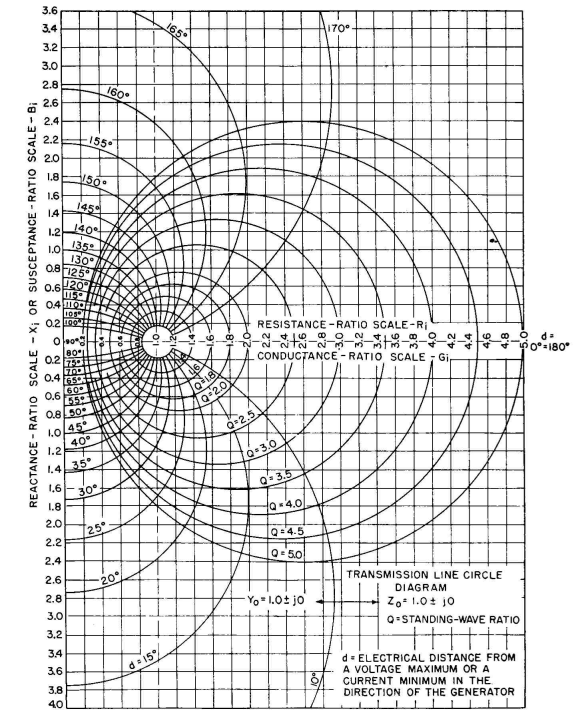| Radio Antenna Engineering is a free introductory textbook on radio antennas and their applications. See the editorial for more information.... |

|

Home  Radio-frequency Transmission Lines Radio-frequency Transmission Lines  Circle Diagram of a Transmission Line Circle Diagram of a Transmission Line |
||||||||






|
||||||||
|
Circle Diagram of a Transmission LineAuthor: Edmund A. Laport
In general, for any short low-loss line,
If this equation is computed for a range of values of βl from 0 to 180 degrees when Zt = Rt varies from 0 (short circuit) to infinity (open circuit), these values can be plotted in rectangular coordinates to give the well-known circle diagram for a transmission line of characteristic impedance Z0. However, this diagram has a more general application if the values are computed for Z0 = 1, because then it can be used for a line of any characteristic impedance by using its value as a proportionality factor applied to all values read from the circle diagram. A chart of this kind is of great utility in making practical adjustments and measurements of transmission lines.
In practice, Z0 is a resistive quantity that can always be computed with adequate precision for any ordinary engineering uses. The electrical length βl is known from linear measurements, based on the propagation velocity. The position and magnitude of a standing wave can be measured by simple means, in the laboratory and in the field. A current minimum (voltage maximum) point is one where the impedance of the line is resistive and equal to QZ0. A current maximum (voltage minimum) point is one where the line impedance is resistive and is equal to Z0/Q. This information also provides a handy method of determining the value of an unknown complex impedance at the load end of the line.
The same chart may be read and used in terms of admittance, conductance, and susceptance for those applications where the parallel components of impedance are more convenient than the series components. All quantities then are reciprocals except Q and βl.
|
||||||||
Home  Radio-frequency Transmission Lines Radio-frequency Transmission Lines  Circle Diagram of a Transmission Line Circle Diagram of a Transmission Line |
||||||||
Last Update: 2011-03-19



